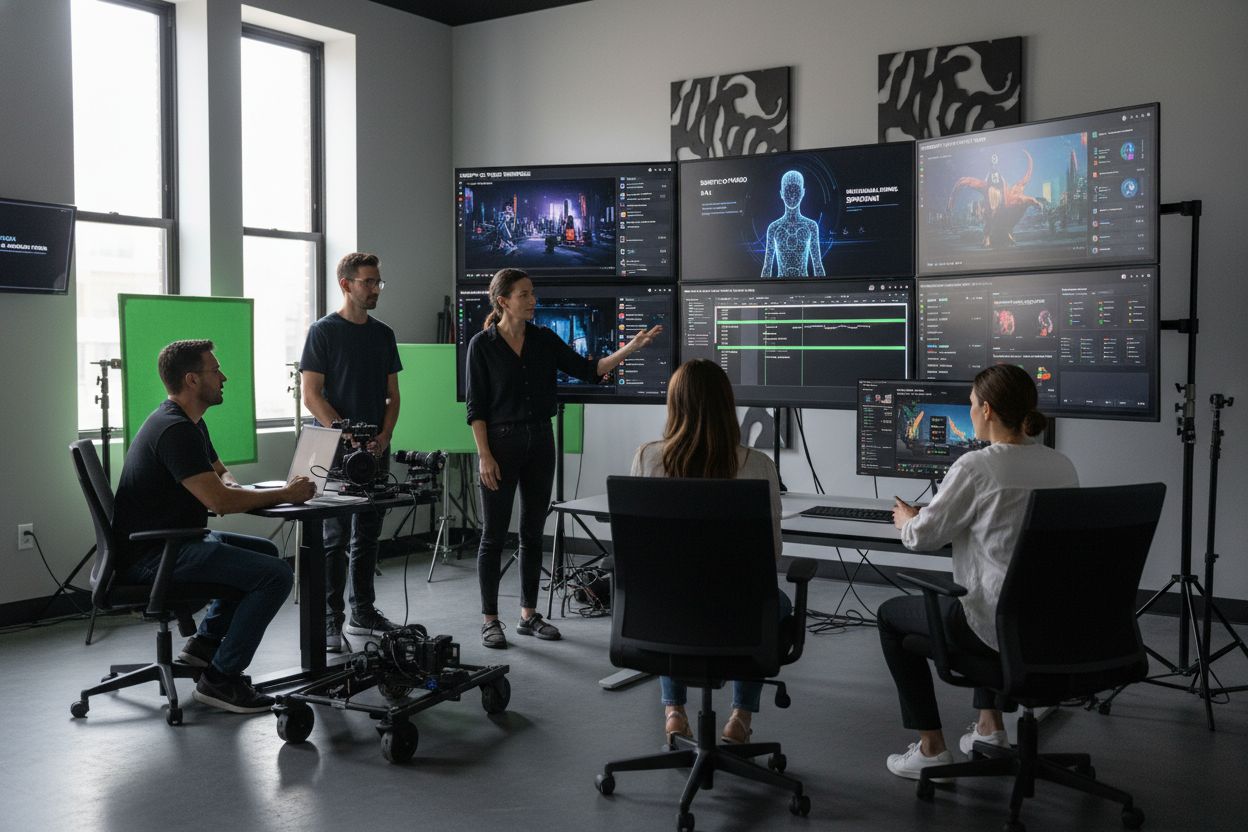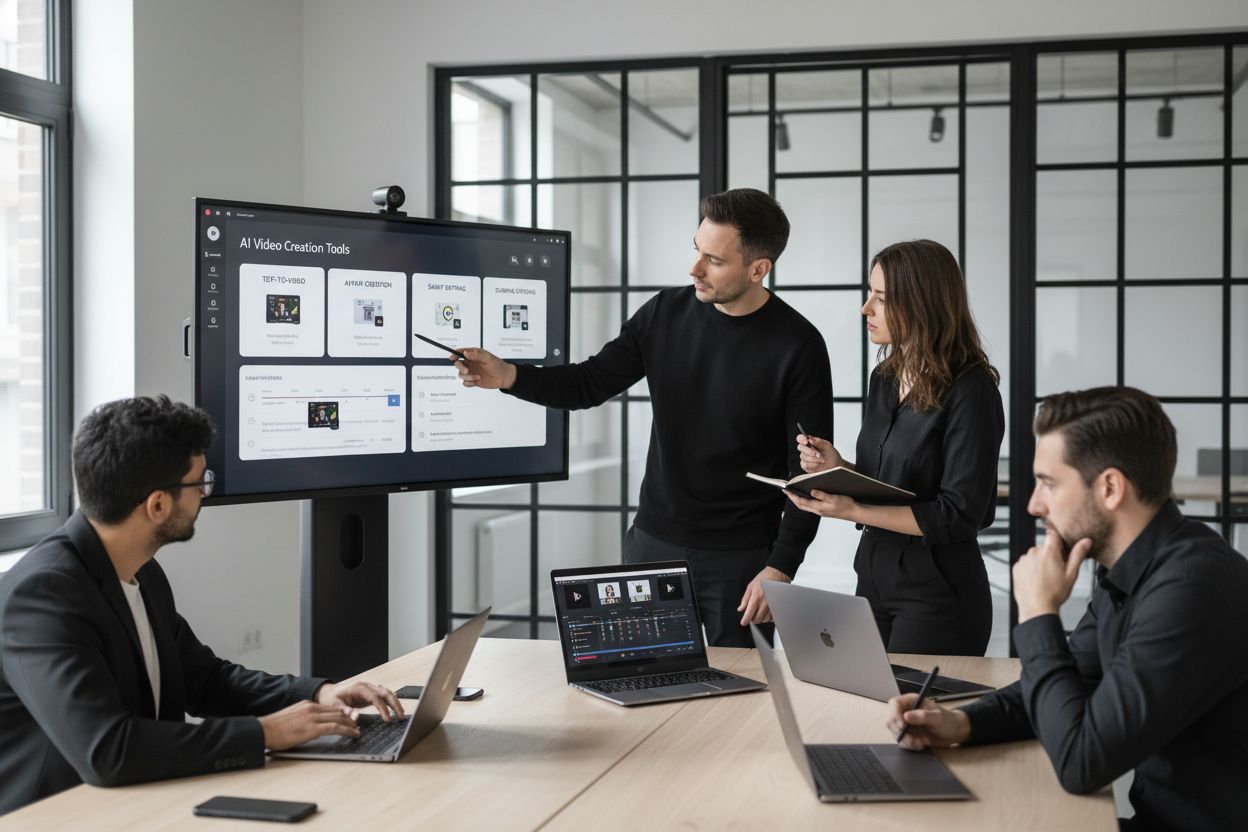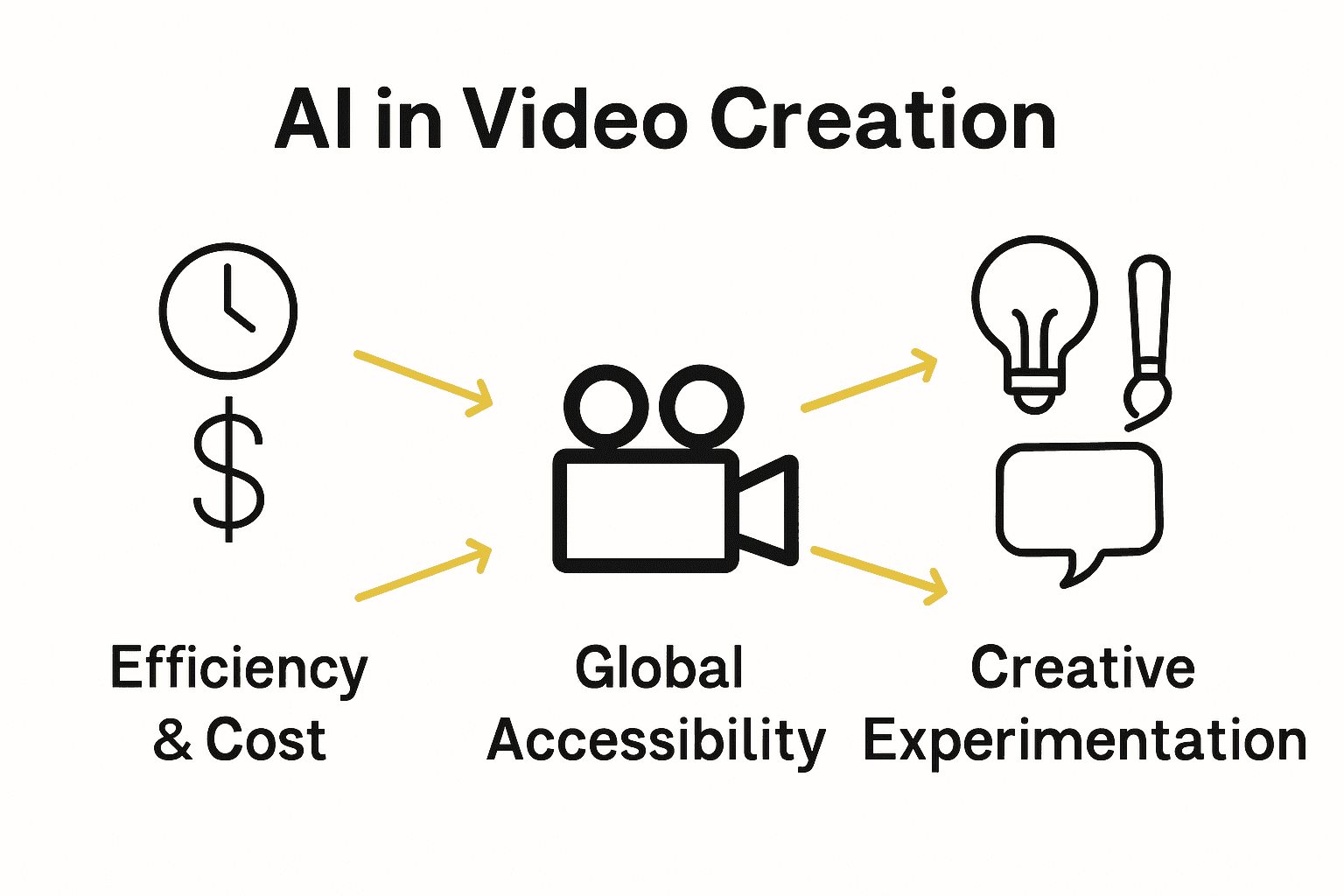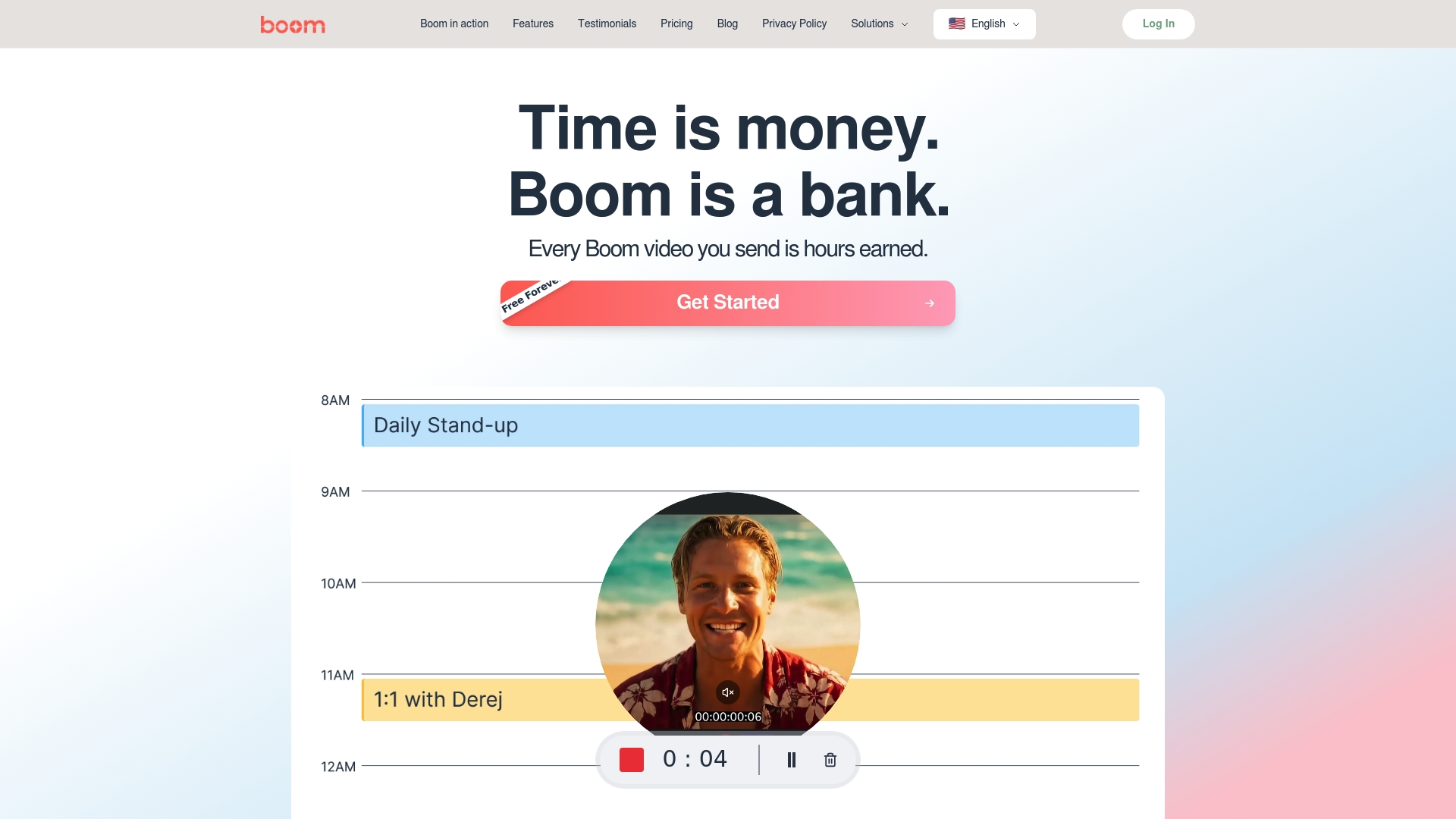Role of AI in Video Creation: Complete Guide
Discover the role of AI in video creation with this comprehensive guide. Explore AI-powered tools, core benefits, workflows, and real-world applications.
Aniket
Author
Role of AI in Video Creation: Complete Guide

Over 70 percent of marketers now use AI-powered tools in at least part of their video workflow. This shift matters to anyone who creates or manages video content because AI is changing the rules of production, editing, and creative direction. From script to final cut, new AI technologies are streamlining how teams work and opening up creative options that were once out of reach.
Key Takeaways
| Point | Details |
|---|---|
| AI-Driven Transformation | AI technologies are revolutionizing video production, allowing for rapid and high-quality content generation with minimal manual effort. |
| Diverse Tool Ecosystem | A variety of AI video tools exist, each specialized to enhance video production, from text-to-video generation to motion graphics. |
| Efficiency and Cost-Effectiveness | By leveraging AI, creators can drastically reduce production timelines and costs, enabling scalable and personalized content creation. |
| Ethical Considerations | With the rise of AI in video, ethical challenges such as algorithmic bias and content authenticity must be addressed to ensure responsible usage. |
Table of Contents
Understanding AI in Video Creation
- Understanding Ai In Video Creation
- Key Types Of Ai Video Tools
- How Ai Transforms Video Workflows
- Benefits For Creators And Teams
- Common Challenges And Ethical Risks
AI is revolutionizing video production, transforming how creators conceptualize, generate, and edit visual content. According to recent academic research from understanding the role of AI in content creation, generative AI models are now capable of producing sophisticated video elements through advanced techniques like text-to-image and image-to-video diffusion models.
These AI technologies enable unprecedented creative possibilities. Creators can now generate high-quality video content with minimal manual intervention, utilizing neural radiance fields and advanced avatar generation techniques. Research indicates emerging workflows that combine real footage with AI-generated elements, allowing for more dynamic and flexible content production strategies.
Key capabilities of AI in video creation include:
- Automated script-to-video generation
- Intelligent visual styling and motion continuity
- Real-time avatar and character animation
- Multilingual dubbing and voiceover generation
- Advanced editing and post-production enhancement
While the technology shows immense promise, it's crucial to understand its current limitations. As highlighted in research from understanding productivity with AI video technology, challenges remain in areas like maintaining consistent narrative coherence and addressing potential content biases inherent in generative models.
Key Types of AI Video Tools
AI video tools have evolved into sophisticated platforms that dramatically transform content creation across multiple domains. Understanding features of modern video tools reveals a diverse ecosystem of technologies designed to streamline video production processes with unprecedented efficiency.
The primary categories of AI video tools can be broadly classified into several specialized segments:
Here's a comparison of the primary types of AI video tools and their capabilities:
| Tool Category | Core Capability | Example Technologies |
|---|---|---|
| Text-to-Video Generators | Script to visuals | Google DeepMind Veo<br>OpenAI Sora |
| AI Video Editing Tools | Auto editing & enhancement | Adobe AI Foundry<br>Clipchamp AI |
| Avatar/Character Creation | Realistic digital personas | Synthesia<br>Hour One |
| Voiceover & Dubbing AI | Multilingual audio sync | Descript Overdub<br>ElevenLabs |
| Motion Graphics & Animation | Dynamic visual effects | Runway ML<br>Kaiber AI |
- Text-to-Video Generators: Advanced models that convert written scripts directly into visual narratives
- AI Video Editing Tools: Platforms enabling automatic editing, scene transitions, and content enhancement
- Avatar and Character Creation Tools: Systems generating realistic digital personas for presentations and content
- Voiceover and Dubbing AI: Technologies producing multilingual audio synchronization
- Motion Graphics and Animation Tools: AI-powered platforms creating dynamic visual animations
According to recent technological developments, models like Google DeepMind's Veo series represent cutting-edge text-to-video technologies. These advanced systems can now produce videos with synchronized audio, including dialogue, sound effects, and ambient noise, while offering sophisticated editing capabilities like lighting adjustments and scene extensions.
While these tools offer remarkable potential, creators must remain mindful of their current limitations and continue exploring innovative approaches to AI-assisted video production.

How AI Transforms Video Workflows
AI is fundamentally reshaping video production workflows by introducing unprecedented levels of efficiency and creative potential. 7 practical examples of AI tools for productivity gains highlight how these technologies are revolutionizing traditional content creation processes.
According to a comprehensive generative AI survey, AI now enables complex creative tasks that were previously too expensive or technically challenging. These transformative capabilities include:
- Automated Character Generation: Creating realistic digital personas
- Visual Style Transfer: Instantly adapting visual aesthetics
- Narrative Consistency Control: Maintaining coherent storytelling
- Advanced Morphing Effects: Generating impossible visual transitions
- Intelligent Asset Management: Streamlining content production workflows
Industry leaders like Adobe are pushing these boundaries further. Their AI Foundry initiative allows businesses to train custom generative AI models on proprietary media assets, enabling organizations to scale brand-specific content production while maintaining intellectual property protection. This approach demonstrates how AI is not just a technological tool, but a strategic asset for creative teams.
Creatives can now leverage AI to dramatically reduce production time, experiment with novel visual concepts, and overcome traditional creative limitations. Understanding how to optimize video communication methods provides additional insights into maximizing these transformative technological capabilities.
Benefits for Creators and Teams
AI video technologies are revolutionizing how creators and teams approach content production, offering unprecedented efficiency and creative possibilities. Benefits of async video communication highlights the transformative potential of these emerging technologies.
Recent academic research reveals compelling advantages for various professional contexts. An academic study comparing AI-generated instructor videos with traditional productions found no significant difference in learning outcomes, suggesting these technologies can democratize high-quality content creation. The key benefits for creators and teams include:

- Rapid Content Generation: Dramatically reducing video production timelines
- Cost Efficiency: Minimizing expensive production resources
- Scalable Customization: Creating personalized content at scale
- Global Accessibility: Enabling multilingual and culturally adaptive content
- Creative Experimentation: Lowering barriers to complex visual storytelling
Technological innovations like Google Cloud's Veo 3 and Veo 3 Fast are pushing these boundaries further. These platforms enable creators to produce high-quality 1080p videos with native audio and precise lip-syncing, with Veo 3 Fast specifically designed to accelerate tasks like ad testing and training video production.
For freelancers and teams seeking to stay competitive, understanding and integrating these AI tools is becoming increasingly critical. Understanding essential video creation tips for freelancers provides additional insights into effectively leveraging these transformative technologies.
Common Challenges and Ethical Risks
As AI video technologies rapidly evolve, they bring significant ethical considerations and potential risks that creators and organizations must carefully navigate. 7 types of video content for teams to boost collaboration underscores the importance of understanding these emerging challenges.
According to analyses of recent AI video generation tools like OpenAI's Sora, several critical ethical concerns have emerged:
- Algorithmic Bias: Persistent stereotyping and limited diversity representation
- Content Authenticity: Challenges in distinguishing AI-generated from real content
- Intellectual Property Concerns: Unclear boundaries of content ownership
- Privacy Risks: Potential misuse of synthetic media technologies
- Cultural Misrepresentation: Potential reinforcement of harmful social stereotypes
Research from a comprehensive SWOT study highlights the complex regulatory landscape surrounding generative AI in media. The study points to emerging challenges in cultural representation and the urgent need for robust safeguards. These concerns are particularly pronounced in areas like gender representation, racial diversity, and responsible content generation.
Creators and organizations must proactively address these challenges by implementing ethical guidelines, diversifying training data, and maintaining transparency about AI-generated content. Understanding essential video creation tips for freelancers can provide additional context for navigating these complex ethical considerations.
Experience Effortless AI Video Creation with Boom
Overwhelmed by the challenges of fast-changing AI video technology? You read how creators struggle to keep up with rapid content demands, narrative consistency, and the complexity of new AI video tools. The article highlights these pain points—like script-to-video generation, multilingual dubbing, and the need for streamlined, on-brand video communication—across creative workflows and remote teams. If this sounds familiar, you are not alone. Many teams feel stuck between old-school video calls and the promise of smarter, time-saving AI workflows.
Discover how Boom makes AI video simple

Ready to turn hours of editing and endless meetings into polished videos in minutes? Cut through technical hurdles with Boom’s async-first AI video platform, where voice-to-video recording, instant scripting, and multilingual dubbing work for you—no special skills needed. Join professionals already saving time and scaling their message. Try Boom today free and start creating on-brand, engaging videos faster than ever. Your next AI-powered video is just one click away at https://boomshare.ai.
Frequently Asked Questions
What are the core capabilities of AI in video creation?
AI in video creation includes capabilities such as automated script-to-video generation, intelligent visual styling, real-time avatar animation, multilingual dubbing, and advanced editing and post-production enhancements.
How do text-to-video generators work?
Text-to-video generators convert written scripts into visual narratives by utilizing advanced models that produce videos with synchronized audio, enhancing the overall storytelling experience.
What are the benefits of using AI video technologies for creators?
AI video technologies offer rapid content generation, cost efficiency, scalable customization, global accessibility, and the opportunity for creative experimentation, making it easier for creators to produce high-quality content.
What ethical challenges are associated with AI video technologies?
Ethical challenges include algorithmic bias, content authenticity concerns, intellectual property issues, privacy risks, and cultural misrepresentation, all of which creators must address to ensure responsible use of AI in video production.
Recommended
About the Author
Aniket
Software Engineer.
